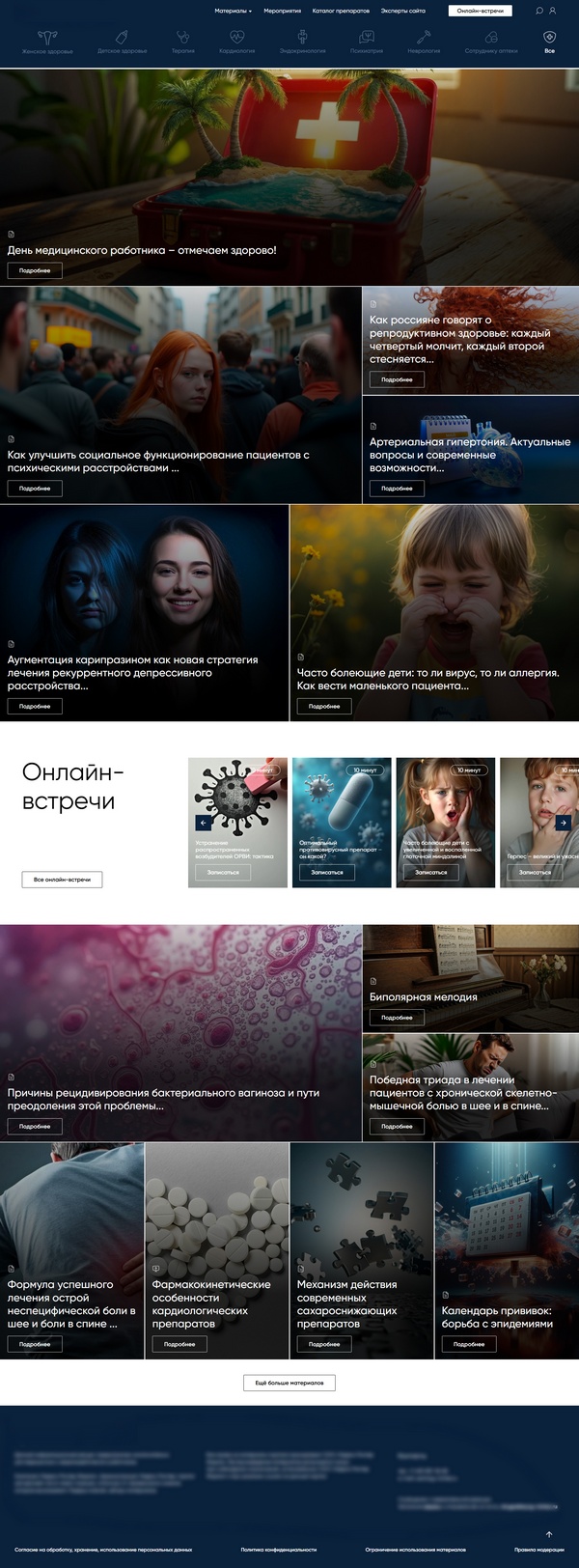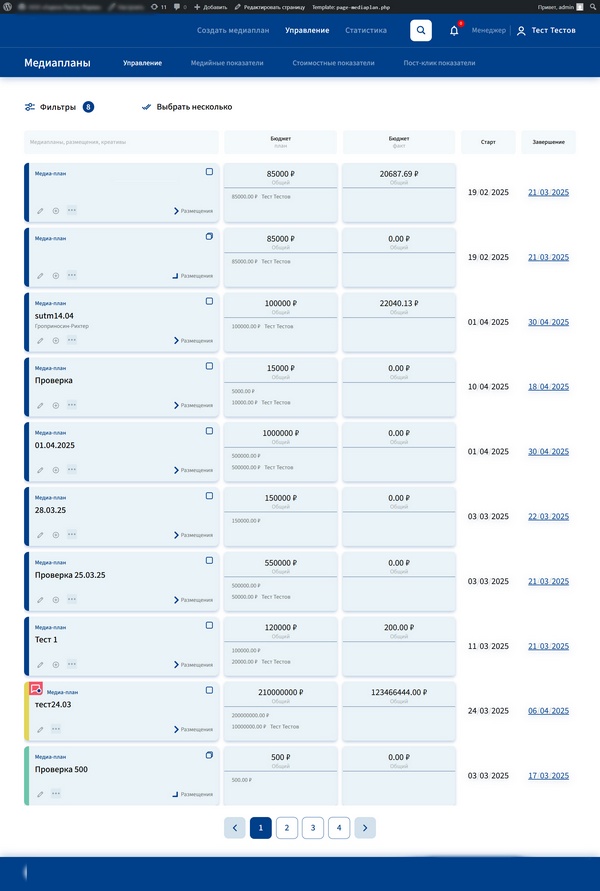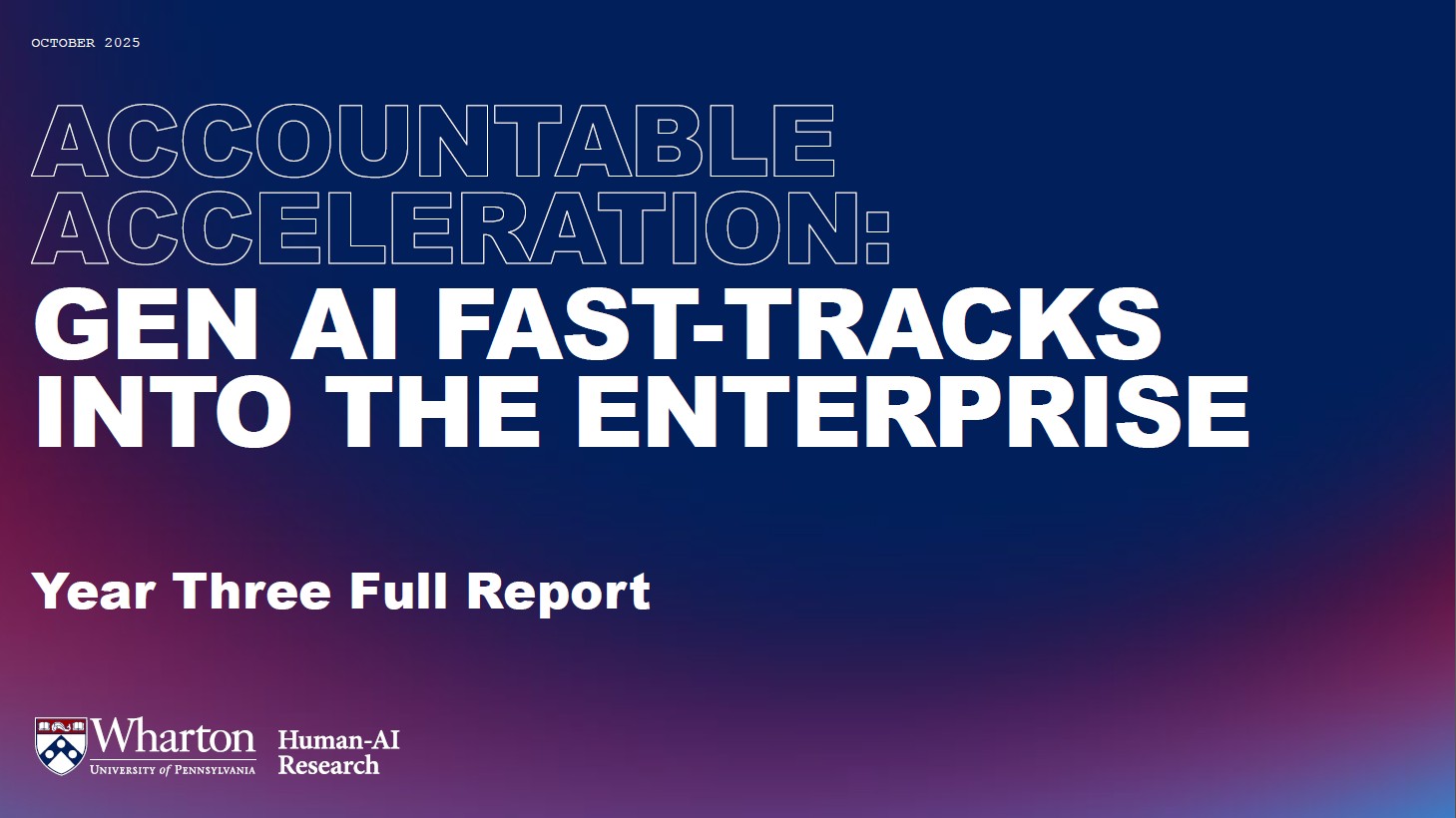Gen AI Fast Tracks Into The Enterprise And Why CEOs Cannot Treat It As Experiment Anymore
Gen AI stopped being a toy.
It is now a line in enterprise budgets measured in millions and linked to real ROI. Some companies already treat it as an operating system. Others still run “cool pilots” that never touch profit.
This is my read of the 2025 Wharton and GBK Collective report on Gen AI adoption. It is a 90 page x ray of how large enterprises really use Gen AI now
If you sit in the CEO chair, here is what actually matters.
Gen AI moved from playground to everyday infrastructure
The report tracks 3 waves of adoption from 2023 to 2025. Exploration. Proving value. And now accountable acceleration. Gen AI use moved from side tasks to daily work.
Some hard numbers
Most executives now use Gen AI personally. Around 82% report weekly use and 46% use it daily. In 2023 that weekly number was below 37%
Inside enterprises Gen AI is embedded across functions. IT, purchasing and procurement lead on daily use. Marketing, sales and operations follow with strong growth. Usage at least weekly has become the norm for the majority of large firms
What this means for you
If you still treat Gen AI as something your “innovation team” plays with after hours, you are behind the median. Not the leaders. The median.
You do not need another brainstorming session on prompts. You need a list of concrete workflows where Gen AI already saves time or improves quality and a map of where it will go next quarter.
Budgets, ROI and where the money actually goes
The report is very clear on money. Gen AI is no longer paid from “innovation funds” only. It sits in tech budgets with real expectations.
Two thirds of enterprises invest at least 5 million dollars per year into Gen AI initiatives. Tier 1 firms spend even more while mid sized and smaller enterprises still invest heavily relative to revenue
Around 72% of companies already measure ROI on Gen AI. Roughly three quarters report positive returns and 4 in 5 expect positive ROI within the next 2 to 3 years
Budget is not just tools
The report shows that more than one third of Gen AI budgets goes into technology. New tools. Current systems. Another large chunk now goes into internal research and development which is approaching about one third of tech budgets in some enterprises
This tells an important story. Leaders are not only buying off the shelf tools. They are building internal capabilities and tailored solutions on top.
For CEOs this is the real shift. Gen AI spend is treated like product and infrastructure. Not like marketing swag.
The human capital lever
The most important theme in the report sits far away from model benchmarks. People.
Responsibility for Gen AI adoption has moved decisively into the C suite. Executive leadership is now a leading force along with IT. Individual enthusiasts and single business units lost share as primary drivers
Chief AI officers or equivalent roles now exist in around 60% of companies in the sample. Many of these responsibilities are added to existing roles, not always full new positions. Strategy remains a team job across CEO, CIO or CTO, CAIO and business leaders
At the same time the report shows clear friction
- Skill gaps and training gaps stay among the top barriers
- Concerns about data security, operational complexity and data accuracy remain high
- Leaders worry that employees will lean on tools without building durable skills if training and role design do not change
In simple words. Tools are ahead of people. Culture, skills and management practices lag behind.
AI agents are not theory anymore
One of the most interesting parts of the report is practical usage.
Gen AI is not just used for copy writing and slide polishing. Enterprises report use in
- IT security and cybersecurity
- Risk identification and financial risk analysis
- Regulatory documentation and monitoring
- Supply chain risk management and operations planning
These look very much like agents. Systems that watch events, help to decide, document and sometimes act. Accuracy levels reported in case examples reach into serious territory, often above 90 percent in narrow tasks
The pattern I see
Wave 1 was “AI as smart intern” for content and research.
Wave 2 was “AI as copilot” inside tools.
Wave 3 that this report hints at is “AI as workflow layer”.
Not full autonomy. But continuous agents supporting and in some cases coordinating end to end processes.
What a CEO should do in the next 90 days
Here is the thing. This report is not just one more slide deck for your strategy offsite. It is a mirror.
If your reality looks very different from these numbers, you are not in the mainstream anymore. You are a laggard. That is a strategic risk.
Practical moves for the next 90 days
Map your baseline
Ask for a one page report on Gen AI use in your company.
- Who owns Gen AI strategy
- Which functions use it weekly
- What is the current annual spend
- Where do you already measure ROI
No stories. No screenshots. Just numbers and named owners.
Turn pilots into a portfolio
Create a simple portfolio of Gen AI initiatives. For each one define
- Business owner
- Target metric such as hours saved, cycle time, conversion or error rate
- Budget and clear go or stop rule
If an initiative cannot be measured, do not scale it.
Invest in the human side on purpose
Budget for training, enablement and change management alongside tools. Decide which roles must become “AI native” in the next year and design their workload so they have time to practice with real tasks, not artificial labs.
Pick 3 critical workflows for agents
Identify 3 to 5 workflows where you burn the most time or lose the most money. Support tickets. Financial closing. Contract review. Compliance documentation.
Your job is not to write prompts. Your job is to assign a small cross functional team and tell them to reach a clear target such as 30 percent time saved or faster time to resolution using Gen AI and agents, then roll the winner out across the company.
Source
If you want to read the full study, you can get it here















